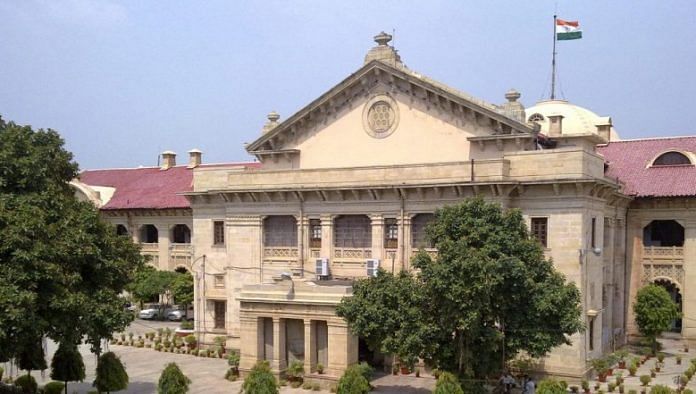New Delhi: Vacancies in high courts hit a new high this month, with no incumbents for 38 per cent of the sanctioned posts for permanent and additional judges, according to data from the Law Ministry.
India’s 25 high courts have a sanctioned strength of 1,079 judges, of which 414 are currently vacant, higher than at any other point this year.
This, when the high courts — the second-highest court in the judicial hierarchy — face a staggering pendency of 43 lakh cases.
There were 392 vacancies in the high courts when 2019 began, which rose to 400 in February before falling to 394 in March, according to data gathered by the Department of Justice.
Allahabad High Court worst hit
The Allahabad High Court, the largest high court in the country, also has the highest number of vacancies, 58 against a sanctioned strength of 160. This is seven more than the number of vacancies in the court this January.
The Punjab & Haryana High Court came second with 37 vacancies against a sanctioned strength of 85, followed by the high courts of Karnataka (sanctioned strength 62) and Calcutta (sanctioned strength 72), which have 31 vacancies each.
Also Read: Justice Tahilramani’s resignation shows why Supreme Court collegium is a failed system
Judicial vacancies keep arising on account of several reasons, including retirement, resignation or elevation of judges, and increase in the sanctioned strength of courts.
A three-member Supreme Court collegium serves as the final authority on appointing high court judges (a five-judge collegium oversees Supreme Court appointments), aided by the collegium of the high court concerned.
It is the high court collegium that usually shortlists judicial candidates and sends the names to the law ministry. The ministry then forwards candidates’ names to the Supreme Court collegium along with background check reports prepared by the Intelligence Bureau.
Process dogged by controversy
Even as high courts function at a reduced strength, the appointment process remains dogged by controversy.
Most recently, the transfer of Madras High Court Chief Justice V.K. Tahilramani to the much-smaller Meghalaya High Court caused the judge to resign. She was allegedly transferred because she refused to elevate two ineligible lawyers to the high court bench.
Another Supreme Court collegium recommendation from May, to appoint Justice A.A. Kureshi of the Bombay High Court as Chief Justice of the Madhya Pradesh High Court, is also pending as the Centre has requested the collegium to reconsider his candidature.
Also Read: Can disclose reason for transfers, says SC after Justice Tahilramani controversy




This has been going on for years and is nothing but a big scam in itself. 1000 judges required and only 600 working. How can it manage 4,300,000 pending cases!! CJI should resign because this situation is just designed to delay justice and promote corruption. No wonder he is trying to GAG the public’s right to RTI!!